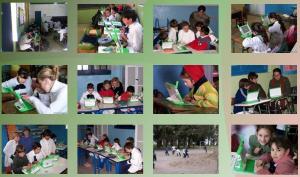India, known for the “world’s cheapest” innovations, unveiled a prototype of a $35 tablet computer aimed at students.
The project is part of an ambitious education technology initiative by the Indian government, which also aims to bring broadband connectivity to India’s 25,000 colleges and 504 universities and make study materials available online.
The government even plans on subsidizing the cost of the tablet for its student which would bring the purchase price down even lower. According to Kapil Sibal, the country’s Minister for Human Resource Development, this is their answer to MIT’s $100 computer.
The Linux-based computer at first glance resembles an Apple iPad and features basic functions you’d expect to see in a tablet–a Web browser, multimedia player, PDF reader, Wi-Fi, and video conferencing ability. It has 2GB of RAM (but no hard disk, instead using a memory card) and USB ports and could be available to kids from primary school up to the university level as early as next year.
(Sources: telecentre.org, cnet news, bbc news)
The computer has been named “Nano” and has been developed through joint efforts of IISc Bombay and IIT Chennai. Although the computer itself has been developed through the interfacing of various off-shelf components yet it has been engineered to be rugged and all-weathered, suited for use by children, and can be termed as a very promising innovation. The use of opensource software and cheap hardware, memory cards instead of hard-disk, makes the promise of $10 (aimed target) somewhat plausible.
Full Story



 On one end of the spectrum, we have
On one end of the spectrum, we have